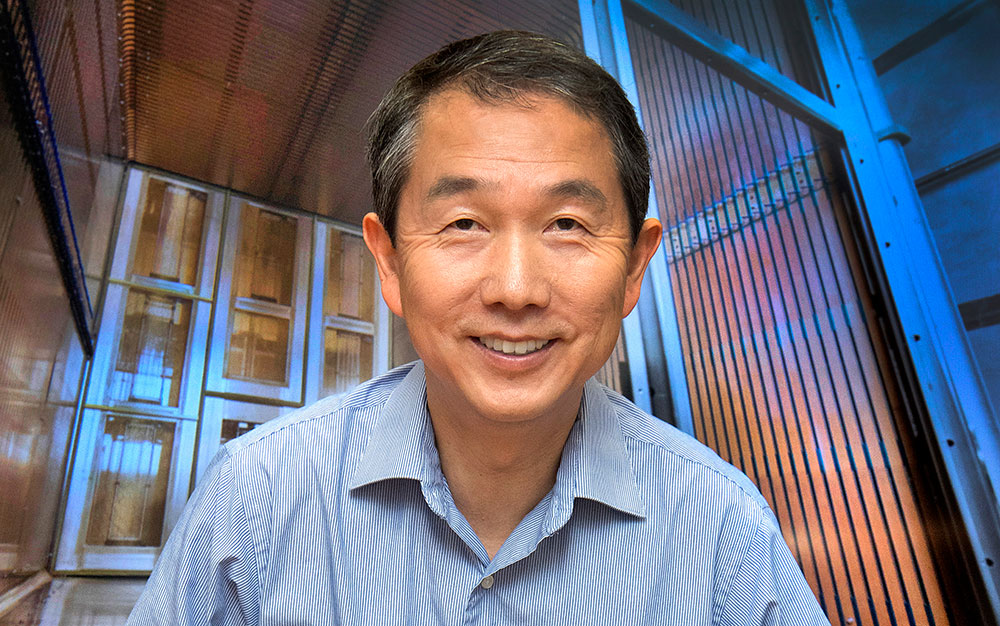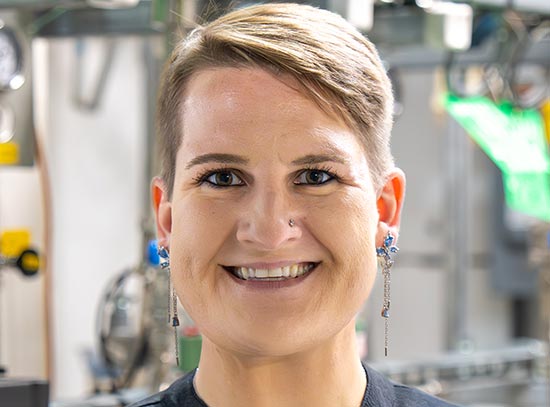Brookhaven's Bo Yu Wins American Physical Society's Division of Particles and Fields Instrumentation Award
Yu's leadership and creative approach to design have made him an indispensable resource for several high-profile research projects
March 24, 2023
Every year, the American Physical Society (APS) honors exceptional contributions to instrumentation in the field of particle physics through the Division of Particles and Fields (DPF) Instrumentation Award. This award recognizes the work that goes into unique instrumentation and detectors that make an impact in the field; new techniques, methods, and innovative uses for instrumentation; or the authorship of influential papers or books. Bo Yu, a physicist and leader in detector design in the Instrumentation Division at the U.S. Department of Energy’s (DOE) Brookhaven National Laboratory, has been recognized with this award for the many pioneering achievements he has made during his career.
“I am truly honored to receive this award,” responded Yu. “I often think of my work as mundane, but I am extremely grateful for the recognition of these contributions to the field of liquid argon time projection chambers.”
While Yu remains humble about his work, it’s hard to deny its far-reaching impact. Yu has made significant contributions to the development of state-of-the-art liquid and gas detectors, notably liquid argon time projection chambers (LArTPCs). These specialized TPCs allow researchers to map the trajectories of particles generated when neutrinos interact with argon atoms in three dimensions. This technology has been instrumental in collaborative neutrino experiments such as MicroBooNE and is central to the upcoming Deep Underground Neutrino Experiment (DUNE).
“It’s been fun working on various LArTPCs for the past 15 years,” recalled Yu. “The most exciting part of that has been the past four or so years building ProtoDUNE I & II, and seeing the printed circuit board anodes concept turn into large-scale prototypes. I am looking forward to working with the new technologies being developed for future DUNE detector modules.”
Yu has also made a significant impact on electrical and mechanical designs for gaseous detectors, including electrode concepts. His research on position readout is the basis of the muon chambers of the ATLAS detector at the Large Hadron Collider at CERN, Switzerland and the gas-filled detectors in the original PHENIX experiment at the Lab’s Relativistic Heavy Ion Collider. These components help detectors identify specific properties of particles in experiments at these colliders.
Yu started his career as a graduate student at Brookhaven Lab in 1986 and earned his Ph.D. in physics from the University of Pittsburgh in 1991, the same year he joined the Lab as a staff scientist. His expertise is notable, starting from the conception of a detector system and following through to its completion. Prior to focusing his effort on the LArTPCs, he was the key contributor to a novel neutron imaging detector system and neutron imager at an international neutron facility.
Brookhaven National Laboratory is supported by the Office of Science of the U.S. Department of Energy. The Office of Science is the single largest supporter of basic research in the physical sciences in the United States and is working to address some of the most pressing challenges of our time. For more information, visit science.energy.gov.
Follow @BrookhavenLab on Twitter or find us on Facebook.
2023-21123 | INT/EXT | Newsroom










